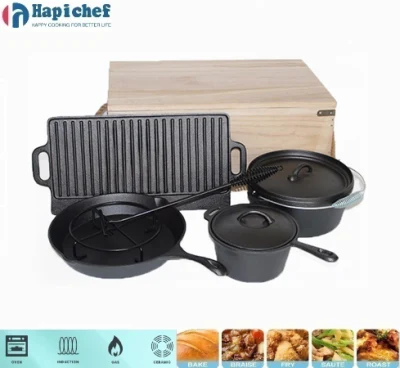Tips for Properly Seasoning Your Cast Iron Pan for Optimal Cooking Performance
How to Season a Cast Iron Pan A Guide for Home Cooks
Cast iron pans are renowned for their durability, heat retention, and ability to develop a natural non-stick surface when properly cared for. One of the most important aspects of maintaining a cast iron skillet is seasoning it correctly. Seasoning is the process of creating a protective layer of polymerized oil on the surface of the pan, making it more resistant to rust and enhancing its cooking efficiency. This article will guide you through the best practices for seasoning a cast iron pan.
Why Seasoning is Important
Seasoning a cast iron pan not only prevents rust but also improves the flavor of your dishes. The seasoning layer creates a smooth, non-stick surface that can enhance the cooking experience, allowing for easier food release and simpler cleaning. Moreover, it also contributes to the longevity of your pan, making it a worthwhile investment in your kitchen.
Choosing the Right Oil
When seasoning a cast iron pan, the choice of oil is crucial. Not all oils are created equal, and some perform better than others at high temperatures. Commonly recommended oils for seasoning include
- Flaxseed Oil Known for its high smoke point and ability to create a durable coating, flaxseed oil is often favored by experienced cast iron users. - Canola Oil With a decent smoke point and affordability, canola oil is a popular choice for everyday cooks. - Grapeseed Oil Similar to canola oil, grapeseed oil has a high smoke point and works well for seasoning. - Vegetable Oil Easy to find and relatively inexpensive, vegetable oil is a common option for those new to cast iron cooking.
Steps to Season a Cast Iron Pan
1. Clean the Pan If your pan is new or has rust, start by scrubbing it with warm soapy water and a stiff brush to remove all residues. Rinse and dry thoroughly. If your pan is already seasoned but needs a refresh, a light scrub with salt can help remove food particles.
re season a cast iron pan suppliers

2. Apply Oil Once the pan is clean and dry, apply a thin layer of your chosen oil. Use a paper towel or a clean cloth to spread a small amount evenly across the entire surface, including the handle and the bottom. Be careful not to use too much oil, as it can create a sticky surface.
3. Bake the Pan Preheat your oven to 375°F (190°C). Place the pan upside down on the oven's middle rack. This prevents any excess oil from pooling and allows it to create an even layer. You may want to place a baking sheet on the lower rack to catch any drips.
4. Let it Bake Bake the pan for about one hour. After this time, turn off the oven and let the pan cool down inside. This gradual cooling helps to set the seasoning.
5. Repeat as Necessary For a newly purchased pan or one that hasn’t been seasoned in a while, you may want to repeat the seasoning process two to three times to build up a strong, non-stick coating.
Maintaining Your Seasoned Pan
Once seasoned, a cast iron pan requires regular maintenance. After each use, rinse it with hot water and scrub gently with a brush or non-metal sponge, avoiding soap if possible. Dry it thoroughly and apply a light coat of oil to protect it from moisture.
Conclusion
Seasoning a cast iron pan is a straightforward process that can dramatically enhance its performance and lifespan. By choosing the right oil and following proper seasoning techniques, you can ensure your cast iron skillet will be a reliable and effective cooking tool for years to come. Embrace the charm of cast iron cooking and enjoy the delightful meals you can create!
-
Why Every Kitchen Needs a Casserole Cast Iron DishNewsJun.24,2025
-
Experience the Tradition and Quality of Cast Iron CookwareNewsJun.24,2025
-
Double Sided Cast Iron Grill PanNewsJun.24,2025
-
Cast Iron Dutch Ovens You’ll Actually UseNewsJun.24,2025
-
Buy Cast Iron Griddle for Everyday CookingNewsJun.24,2025
-
Barbecue Iron Grill Cooking PowerNewsJun.24,2025
-
Standard Product Lines from Cast Iron Cookware SuppliersNewsJun.11,2025
